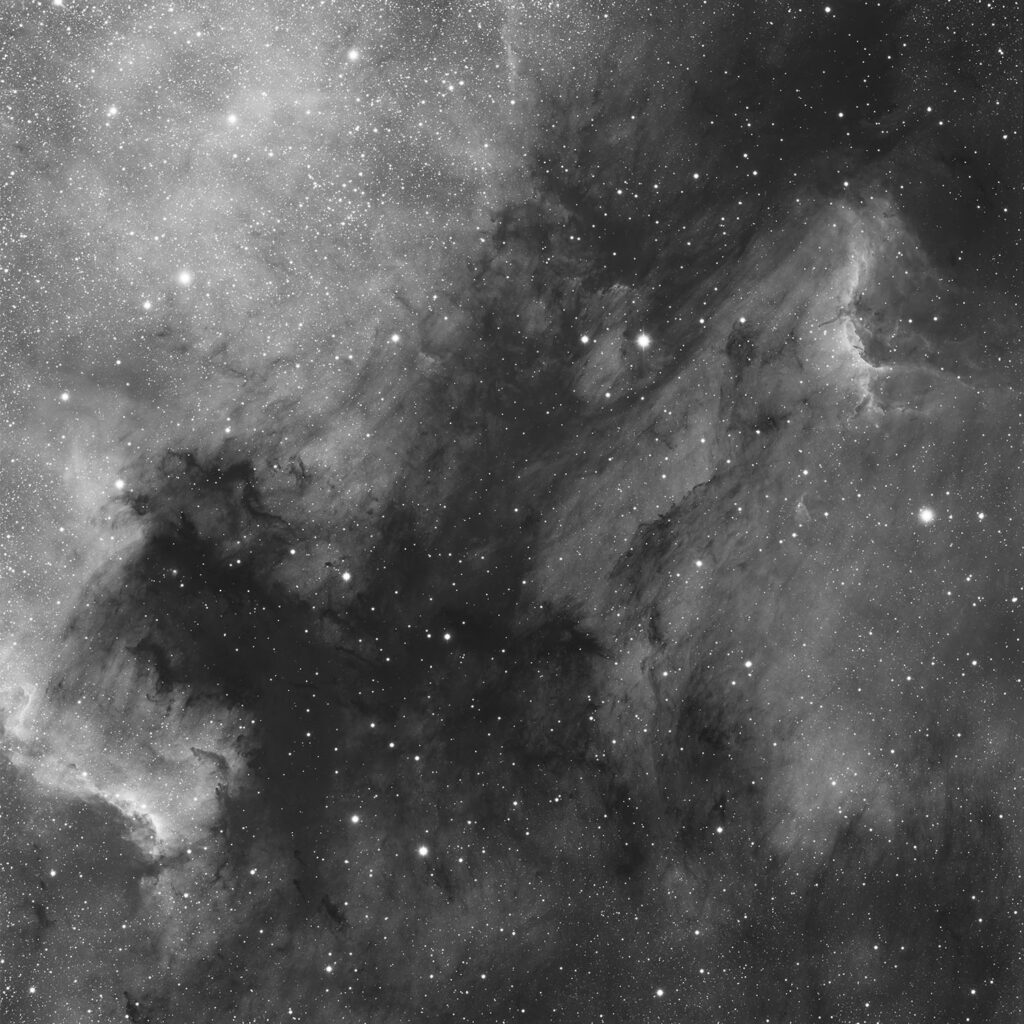IC 5070 & NGC 7000
Pelican & North American Nebula. Emission Nebula, Cygnus
- Description
- Technical
- Links
The North America Nebula (NGC 7000 or Caldwell 20) is an emission nebula in the constellation Cygnus, close to Deneb (the tail of the swan and its brightest star). The shape of the nebula resembles that of the continent of North America, complete with a prominent Gulf of Mexico.
The North America Nebula covers a region more than ten times the area of the full moon, but its surface brightness is low, so normally it cannot be seen with the unaided eye. Binoculars and telescopes with large fields of view (approximately 3°) will show it as a foggy patch of light under sufficiently dark skies. However, using a UHC filter, which filters out some unwanted wavelengths of light, it can be seen without magnification under dark skies. Its shape and reddish color (from the hydrogen Hα emission line) show up only in photographs of the area.
The portion of the nebula resembling Mexico and Central America is known as the Cygnus Wall. This region exhibits the most concentrated star formation.
At optical wavelengths, the North America Nebula and the Pelican Nebula (IC 5070) appear distinct as they are separated by the silhouette of the dark band of interstellar dust L935. The dark cloud is however transparent to radio waves and infrared radiation, and these wavelengths reveal the central regions of Sh2-117 that are not visible to an ordinary telescope, including many highly luminous stars.
Telescope: Astro Physics 175EDF f8.3
Mount: Astro Physics 3600GTO “El Capitan”
Camera: SBIG STT8300
Guider: SBIG STX-External/OAG
H-alpha: 12×20 mins = 240 mins
Total Imaging Time: 4h 00m
Data Imaged remotely over 1 night during June 2014.
Data acquisition & Processing by David Churchill.
None

